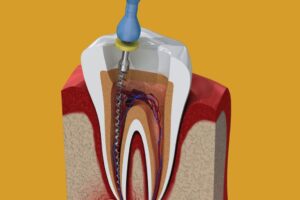Welcome to the Comprehensive Guide to Root Canal Treatment steps in San Antonio, TX. Dental health is a crucial aspect of standard well-being, and knowledge of the intricacies of numerous dental techniques can significantly enhance your oral care routine.
This guide is designed to provide thorough information on root canal remedies, a commonplace but regularly misunderstood dental manner. In this guide, we can discover the essential factors of root canal remedy, from identifying the symptoms and signs and symptoms that necessitate the system to information on the step-by-step system and aftercare.
What is Root Canal Treatment?
A root canal is a dental procedure designed to deal with contamination or harm inside the pulp of teeth. The pulp is the innermost part of the teeth containing nerves, blood vessels, and connective tissue. When this pulp turns inflamed or inflamed due to decay, repeated dental tactics, or trauma, a root canal is frequently necessary to shop the enamel and prevent further headaches.
During a root canal, the infected or damaged pulp is removed, and the internal of the tooth is wiped clean, disinfected, and packed with a biocompatible fabric. The technique commonly ends with the placement of a crown or filling to restore the teeth’s structure and functionality.

Root Canal Treatment
Diagnosis and Evaluation
A thorough dental exam is the first step in diagnosing the need for a root canal procedure. During the examination, Your dentist will ask about your dental and medical history, consisting of any signs you’ve been experiencing, preceding dental treatments, and standard health. The dentist will visually look into your tooth and gums for symptoms of degradation, discoloration, swelling, or different abnormalities that could suggest an infection or damage. X-rays are a crucial device in diagnosing and evaluating root canal treatment.
They provide unique photos of the enamel’s inner structure and surrounding bone. Pulp power trying out is used to evaluate the fitness of the teeth’s pulp and decide whether it’s miles alive, inflamed, or dead.
The Root Canal Procedure

Preparation and Anesthesia
Before the basic root canal method starts, numerous preparatory steps are taken to ensure the patient’s comfort and the success of the remedy. The dentist or endodontist will provide an explanation for the procedure in element, addressing any questions or concerns the affected person might also have.
To reduce discomfort, the dentist administers local anesthesia to numb the affected enamel and surrounding location. This guarantees that the affected person feels no ache during the technique. A dental dam, a small sheet of rubber or latex, is placed around the teeth to keep them dry and free from saliva.
Steps of the Procedure

The root canal method involves numerous specific steps to take away the infected or damaged pulp and repair the tooth’s capability. The dentist creates a small opening inside the crown of the tooth to get the right of entry to the pulp chamber and root canals. This starting permits the elimination of the inflamed or broken pulp. Using specialized units, the dentist cautiously removes the pulp from the pulp chamber and root canals.
This technique, referred to as debridement, gets rid of bacteria, debris, and infected tissue. The cleaned canals are disinfected with antimicrobial solutions to dispose of any final bacteria and reduce the threat of reinfection. After cleansing and shaping the canals, the dentist fills them with a biocompatible cloth called gutta-percha. This rubber-like material is inserted into the canals to fill the distance and save your bacteria from re-entering.
Post-Procedure Care
Proper aftercare is critical for ensuring the achievement of the foundation canal remedy and promoting healing. Avoid chewing at the handled enamel till the everlasting restoration is in place to prevent harm.
Follow the dentist’s commands regarding ache control and medications. Over-the-counter pain relievers like ibuprofen or acetaminophen can help alleviate discomfort.

Maintain good oral hygiene with the aid of brushing and flossing frequently, however, be gentle around the dealt-with region. Some pain and sensitivity are present every day after the process and ought to subside within some days. If the pain persists or worsens, contact your dentist.
See Also:
FAQs
Q: How much does a root canal cost in San Antonio Texas?
A: The cost of a root canal in San Antonio, Texas can vary primarily based on numerous factors, together with the complexity of the case, the precise tooth being dealt with, and the dentist or endodontist revel in and pricing. Typically, the basic root canal treatment cost is $500 to $1500
Q: How much does a root canal cost without insurance in Texas?
A: The cost of a root canal without coverage in Texas can range widely based on several factors. The cost is around $400 to $1000.

